Impact of Cultured Meat on Global Agriculture
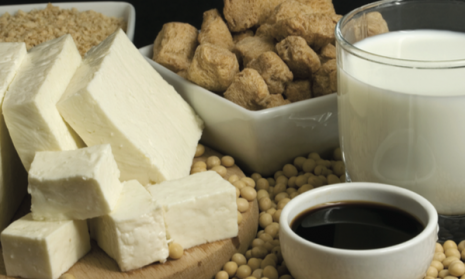
Summary
Ideas on cultured meat have appeared in print for over a century, yet research has commenced only in recent years and surprisingly little progress has been made. This is an area in which the European Community has played a more prominent role than the United States of America. Culturing meat ex vivo proposes unique problems, yet the pres- sures on demand make this a priority area of concern. Even when cultured meat becomes popular and easily avail- able, the rearing of livestock will continue. Conventional agriculture is a crucial component of land management, and our environment will depend upon the raising of grazing animals as much in the future as it has done in the past. Cultured muscle can never entirely supplant meat from conventional sources.
Keywords: meat, cultured, in vitro, mycoprotein, quorn, beef, muscle, Netherlands, United States, biofabrication.
Glossary
Axolotl: an amphibian newt-like creature allied to the salamander.
Mycoprotein: a growth of fungi which is rich in protein and suitable ture allied to the salamander.
Biofabrication: producing complex products from separate ingredients that are artificially produced
Pressure on resources
Meat production is exerting unsustainable pressures upon the environment. This form of agriculture has caused more species to become extinct than any other (Myers and Kent, 2005). In Central America since 1960 more than a quarter of rainforest has been cleared for raising cattle and 70 per cent in Costa Rica and Panama has been destroyed in conversion to rearing livestock, while in Brazil 40 per cent of the land has been cleared for beef production (Caulfield,1985).
This single agricultural sector consumes 8 per cent of all the fresh water in the world and it occupies almost one-third of the world’s surface that is not covered by ice and permafrost. Raising meat currently contributes 18 per cent of greenhouse gases to the atmosphere. (FAO, 2006). This is greater than that produced by the entire worldwide transportation network.
People are regularly encouraged to limit their use of cars to help maintain the climate; they are far less likely to be pressed to cut down on meat con- sumption for a similar reason. As this journal has emphasised there are other
examples of disproportionality in our sense of urgency – similarly, although much attention focusses on the vent- ing of waste carbon dioxide into the atmosphere, there is far less attention paid to surplus nitrate in the environment (Smil, 2011). As we contemplate the future provision of meat, these are issues that demand a more balanced assessment.
Meat production is highly inefficient. A steer requires 100 kg of hay and 4 kg of grain to produce 1 kg of beef. American estimates of the amount of water needed to produce 1 pound of beef vary from 2,500 gallons of water to an industry estimate 450 gallons, but even the lower estimate is arguably unsustainable.
The amount of crops that supply the average world inhabitant is 613 kg per capita annually. In China it is as low as 466 kg, but in the USA, by comparison, the figure is 1,480 kg (Pimentel 2001). This will change, since the emerging nations are now rapidly increasing their consumption of meat as they seek to emulate the inhabitants of western nations.
The conclusion is clear – humans will not be able to consume meat as such a high proportion of a global diet in future. Meat substitutes have been widely available for some 2,000 years and some of these will increase in importance to compensate for a reduced per capita meat supply. In Indonesia, tempeh is a traditional high-protein meat substitute that is produced by fermenting cooked soya beans with the common pin-mould Rhizopus.
The result is an appetising foodstuff that is amenable to a wide range of culinary applications. Bean curd made from soy is well known as tofu in Japan, though it originated as doufo in China and it is produced from the curds made by coagulating soy milk. These foods are claimed to lower the blood levels of low-density lipids by some 30 per cent (Ford, 2009).
More recent arrivals include ascomycete fungi of the genus Fusarium. Many species of this genus produce mycotoxins of economic importance in agriculture, but Fusarium venenatum has been successfully cultured to produce a mycoprotein meat substitute. This is marketed as Quorn and, although it is a profoundly unnatural and hightechnology product, it is proving to be increasingly popular with devotees of health foods.
Culturing meat
The ultimate answer would be to cul- ture meat. In this way, commercial continuous-process production of beefsteak would replace an agricultural sector (or, if not replace, at least substitute for much of the time). The idea is of considerable antiquity. The first mention of cultured meat was in a book written by a German writer who often wrote under the pseudonym of Velatus, in reality a scientist named Kurd Laßwitz.
His pioneering science fiction novel entitled Auf Zwei Planeten of 1897 had Martian invaders bringing a range of novelties to earth, including synthetic foodstuffs. One of their inno- vations was cultured meat.
The idea was not further discussed until 1930, when the writer and politi- cian Frederick Edwin Smith, First Earl of Birkenhead, wrote this description of ‘life in 2030’ in The Strand maga- zine: “It will no longer be necessary to go to the extravagant length of rear- ing a bullock in order to eat its steak. From one ‘parent’ steak of choice ten- derness it will be possible to grow as large and as juicy a steak as can be desired.”
(Smith, 1930). Smith was a close friend of Winston Churchill, and he discussed his ideas with him. It will come as no surprise to anyone accus- tomed to the selfinterest of politicians to find that Churchill took up the cause and wrote about the concept, though without attributing the source. In 1932 he wrote: “With a greater knowledge of what are called hormones, i.e. the chemical messengers in our blood, it will be possible to control growth.
We shall escape the absurdity of growing a whole chicken in order to eat the breast or wing, by growing these parts separately under a suitable medium. Synthetic food will, of course, also be used in the future.” (Churchill, 1932). It is interesting to reflect that Smith had peered 100 years into the future; Churchill was looking a mere half-century and his prognostication has not come true as, for the following seventy years, little progress was made towards cultured meat.
Reasons for slow progress
Why has research into cultured meat proved to be so slow to progress, whereas cultured non-meat cells (like F. venenatum) have been so much more easily exploited? The fundamental reason lies in the complex nature of meat. Although taught as being composed of striated muscle, meat is composed of a complex and interrelated system of tissue types. Striated muscle coexists with connective tissue (itself a complex community of fibrocytes and other cell types), adipocytes, tendons, nerve fibres, lymph and blood vessels.
Not only are these different tissues structurally important, but striated muscle itself is relatively tasteless: steak depends on the ‘marbling’, the extent and distribution of fatty tissues, and it is the fat that confers much of the taste on roast meat (McGee 2004, Ford 2011).
These facts are often overlooked. A patent registered in the Netherlands in 1999 described the production of cultured muscle cells in a three-dimensional structure that would be ‘free of fat, tendon, bone and gristle’. Freedom from bone would be an advantage, whereas freedom from fat would give a bland and unappetising product.
Publications on the possibility of producing animal cells in bulk frequently confined themselves to the culture of a single cell type (Varley and Birch, 1999). This is not a viable approach for the perfection of a meat product. Parallel research has been devoted to systems of producing nutriment on a large scale, and it is now clear that cyanobacteria are clear candidates as they have a protein content in dry matter of up to 70 per cent and can easily be grown in culture.
Photobioreactors would allow us to raise pure cultures of such organisms in large amounts as a feedstock for cultures of animal cells (Ugwu, Aoyagi and Uchiyama, 2008).
Within the last decade, research has begun in a few locations, notably in the Netherlands (at Utrecht, Eindhoven, Amsterdam and Wageningen) and also in the United States (South Dakota, South Carolina and Maryland). In 2005 the first comprehensive paper on cultured meat appeared (Edelman, McFarland, Mironov and Matheny, 2005).
Progress has generally been slow, though in 2007 the Netherlands authorities announced an investment of 2m Euros in cultured meat; this remains the largest single funding for this area of research. In April 2008 the Food Research Institute of Norway organised a conference on cultured meat.
However, when the National New Biology Initiative was announced by the National Academies in the USA in September 2009, there was no sup- port for cultured meat. The pressures on conventional agriculture continued to grow; that same year, beef farming became so unprofitable in Ireland that the entire agricultural sector was said to be ‘near collapse’ (Ryan, 2009). If there is any time to press on with the development of cultured meat, it is surely now.
Environmental concerns
Recent research suggests that the envi- ronmental benefits of cultured meat would be considerable. Research from Oxford and Amsterdam suggests that greenhouse gas emissions could be reduced by as much as 96 per cent, compared to raising beef through conventional agriculture. Energy input could be cut by up to 45 per cent, using up to 96 per cent less water, and 99 per cent less land (Anon, 2011). There are thus clear incentives from economic and environmental perspectives that should drive research ahead.
Yet there remains an agricultural dimension that we cannot ignore. We may be able to look to a future where energy could be tapped with high efficiency, and thus water supplies can be extended (through desalination) virtually without limit. It is possible to contemplate a future where the efficiency of agriculture is optimised, and where nitrogen, pesticide and carbon dioxide pollution are better controlled.
Our ability to predict such changes is limit- ed, and our prognostications are usually better seen as reflections of the recent past, rather than indicators of what lies ahead. In particular, our reliance on current trends as indicators of the future is deeply flawed (Spedding, 1996). Can we confidently look to a near future in which cultured meat makes livestock farming obsolete? There are two reasons to suggest that this will not come to pass.
First is the sheer complexity of the research. As I have emphasised, the intricate structure of meat, as a prod- uct, makes it difficult to recreate ex vivo. There have been experiments to create a collagen lattice on which cells might grow, and even talk of mechanical systems to exercise muscle cells in culture so that they become stronger and more like those found in nature. It may be that the answer will take us towards the harnessing of stem cells and embryonic tissues.
Since an axolotl (Ambystoma mexicanum) can regrow an entire limb, it is clear that the potential may exist in more highly evolved animal species. Furthermore, we know that stem cells generate meat within the embryonic calf, and it must be possible to reprise this process in vitro. Since meat develops – in all its histological complexity – in natural animals, it must surely be possible to recreate such conditions in the labora- tory. Creating the entire system may be easier than turning to biofabrication (Ford, 2011).
The second reason to doubt the abandonment of rearing livestock is the importance of grazing animals in maintaining the environment. The countryside largely owes its appearance and its equilibrium to the grazing of herbivores, and the rearing of sheep and cattle with (to a lesser extent) goats and pigs in maintaining this environment in a form to which our civilisation has become accustomed.
Although we think of areas like the lush meadows of Germany and the wild vistas of the English Lake District as ‘natural and unspoiled’, they are entirely artificial. These romantic landscapes are the result of land management and grazing of farm animals over thousands of years. The alternative – re-forestation – would deny the public open landscapes for recreational purposes and the cover of widespread woodland could even pose a security problem.
Long-term importance of livestock
It can thus be seen that the impact of cultured meat on agriculture will be less than one might at first envisage. Progress in research has proved to be perilously slow. We need to step back from looking at ways of synthesising the structure of meat, and regard the system instead from the standpoint of the single cell from which complex tis- sues naturally arise.
It may well be that mycoprotein will prove easier to pro- duce in a meat-like form for many decades before cultured meat becomes a reality. Furthermore, even when cultured meat and meat substi- tutes are widely and inexpensively available, the role of conventional agri- culture will remain of paramount importance.
It is not simply to produce meat that we raise livestock, but also to manage the land. No matter how research proceeds, and even if the consumption of meat becomes a cost- ly luxury rather than being seen as a birthright, livestock will remain of fun- damental importance.
In time, cultured meat may become an essential part of our daily diet. Its importance will increase as the pres- sures upon food supply by a mush- rooming population outstrip availabili- ty. It will certainly ameliorate the demands placed upon finite resources of land and inputs.
But, no matter how much this industrial sector expands, it will not replace agriculture. It is to the farming of livestock that we owe our surroundings, and no foresee- able research can change that funda- mental fact.
References
- Anon (2011) Reduced emissions from laboratory-grown meat, Laboratory News: 4, July.
- Caulfield, Catherine (1985) The Rain Forests. New Yorker magazine pp 49, 79, 14 January.
- Churchill, W. S. (1932) Fifty years hence, Strand magazine, December.
- Edelman, P. D., McFarland, D. C., Mironov, V. A. and Matheny, J. G. (2005) In Vitro Cultured Meat Production, Tissue Engineering 11 (5/6): 659-662.
- FAO (2006) Livestock’s long shadow – environmental issues and options. Food and Agricultural Organization of the United Nations, Rome, 2006.
- Ford, Brian J. (2009) Culturing Meat for the Future: Anti-death versus anti-life, [chapter in] Tandy, Charles (editor) Death And Anti-Death, 7, Palo Alto: Ria University Press.
- Ford, Brian J. (2011) Critical Focus (6): Cultured meat; food for the future, The Microscope 59 (2): 73- 81.
- McGee, Harold (2004) Food and Cooking. London: Hodder & Stoughton, pp 129-130.
- Myers, Norman, and Kent, Jennifer (2005) The New Atlas of Plant Management. Berkeley and Los Angeles: University of California Press.
- Pimentel, David (2001) Ecological Integrity: Integrating Environment, Conservation and Health. Washington DC: Island Press.
- Ryan, Ray (2009) ICSMA demands urgent action to avoid collapse in beef production, Irish Examiner, 23 September.
- Smil, V. (2011) Nitrogen cycle and world food production. World Agriculture, 2 (1) 9-13.
- Smith, F. E. (1930) The World in 2030, London: Brewer and Warren.
- Spedding, Sir Colin (1996) Agriculture and the Citizen, London: Chapman and Hall.
- Ugwu, C., Aoyagi, H., and Uchiyama, H. (2008) Photobio-reactors for mass cultivation of algae. Bioresource Technology 99: 4021-4028.
- Varley, J., and Birch, J. (1999) Reactor design for large scale suspension animal cell culture. Cytotechnology 29: 177-205.
Figures
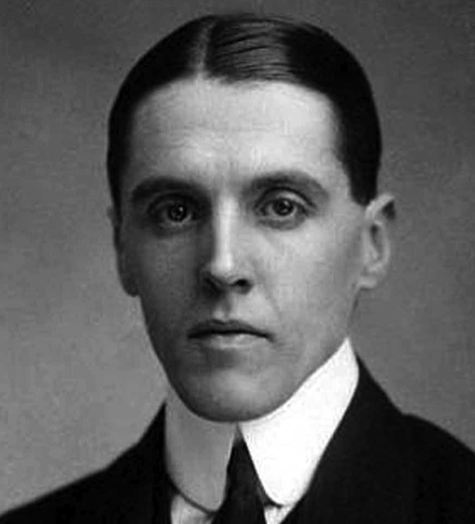
F. E. Smith, who became First Earl of Birkenhead, was a prominent politician and author who published a prediction of meat produced in culture for his book entitled Life in 2030. It was published in London by Brewer and Warren in 1930.

Two years after F. E. Smith’s account, the young Winston Churchill was asked to write on life 50 years in the future. He took his friend’s idea and rewrote it with chicken, instead, as the food source. The article appeared in The Strand magazine in London in 1932.
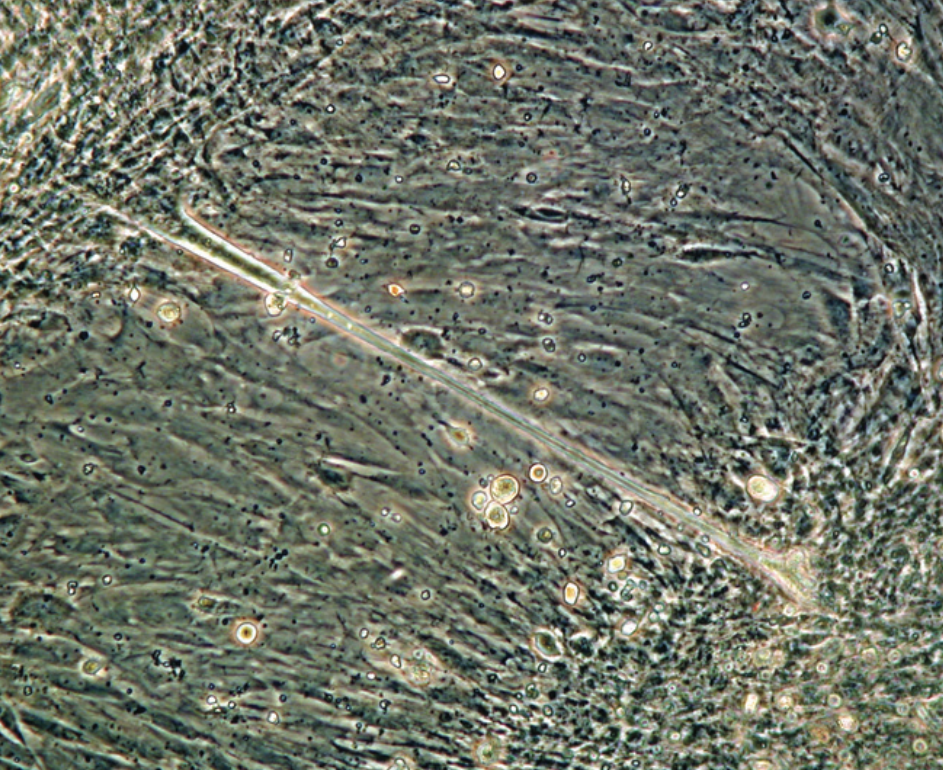
Professor Bernard Roelen of the Faculty of Veterinary Medicine at Utrecht University provides this low-power phase micrograph of images of porcine muscle stem cells cultured in vitro. No striated muscle is yet visible, so these cells are early in differentiation.
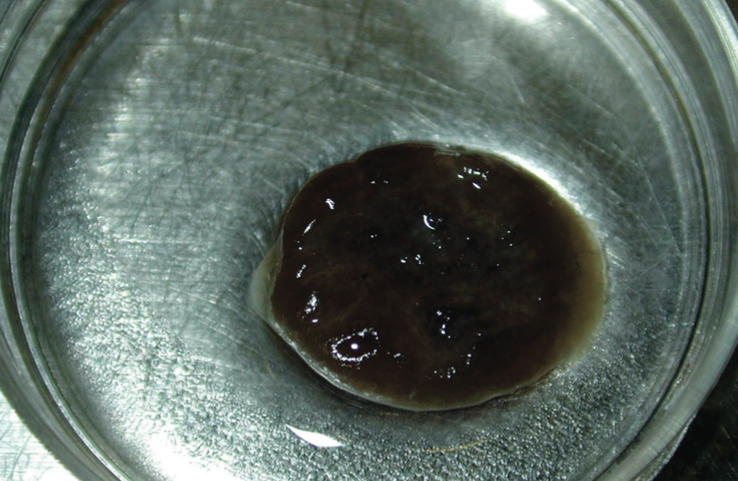
Oron Catts and Ionat Zurr are artists with the SymbioticA project at the Centre of Excellence in Biological Arts at the School of Anatomy and Human Biology, University of Western Australia. They have cul- tured sheep cells in vitro as a novel art-form.
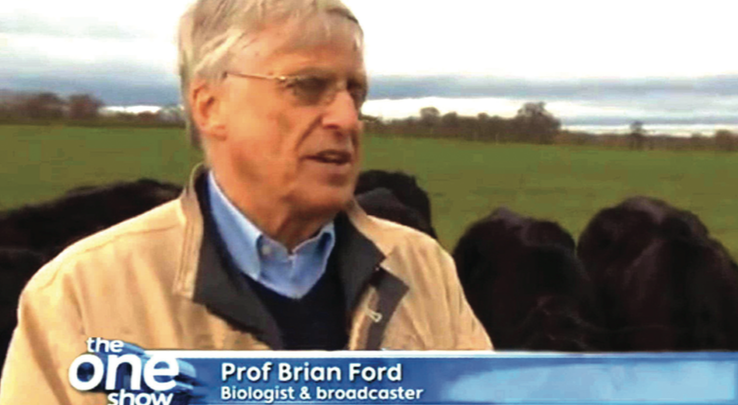
The author has recently discussed cultured meat for the BBC on The One Show with food critic Jay Rayner. After writing the first book chapter on the topic in 2009, he has been interviewed about the potential importance of cultured meat on radio and TV.
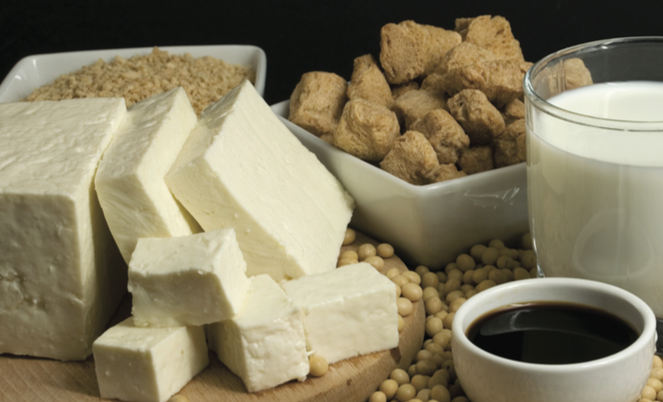
Various soy products used in vegetarian cooking

